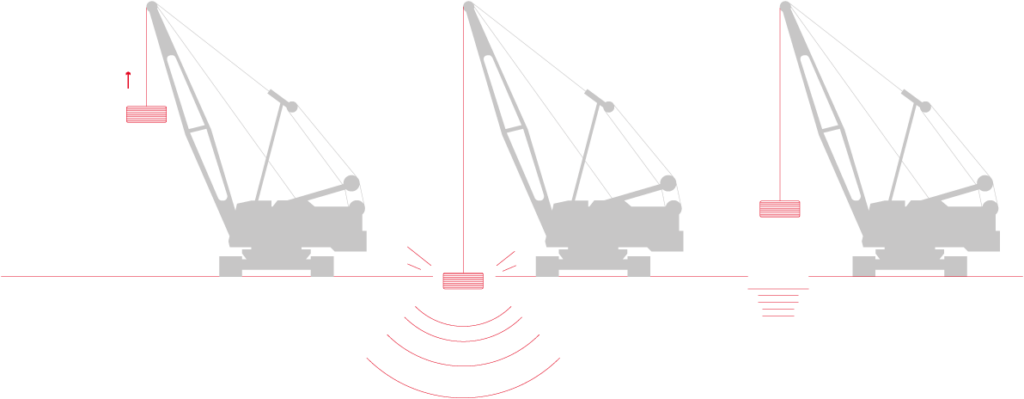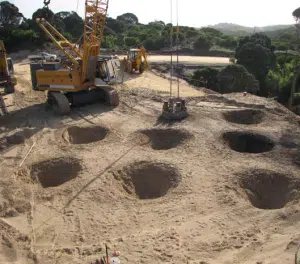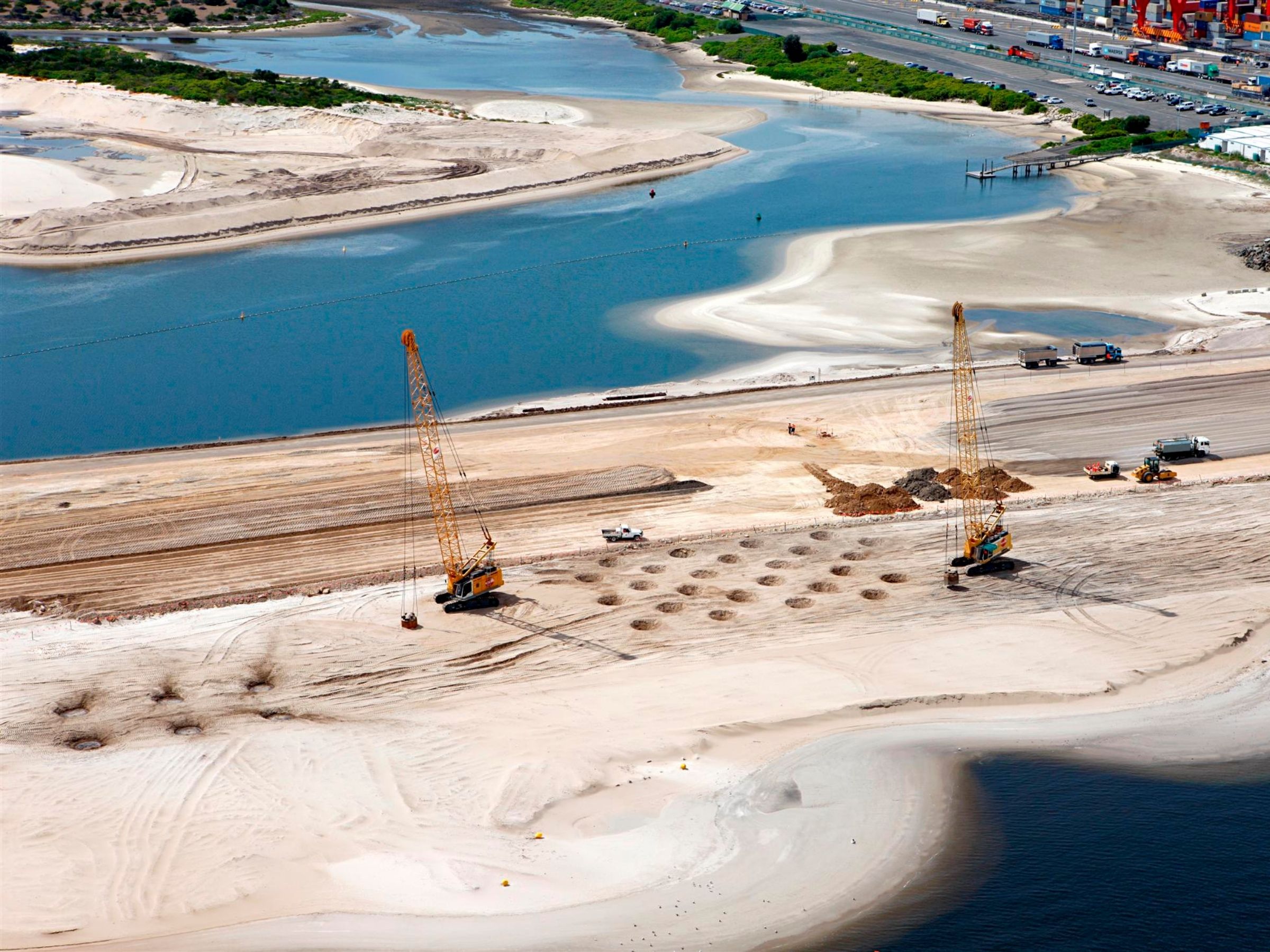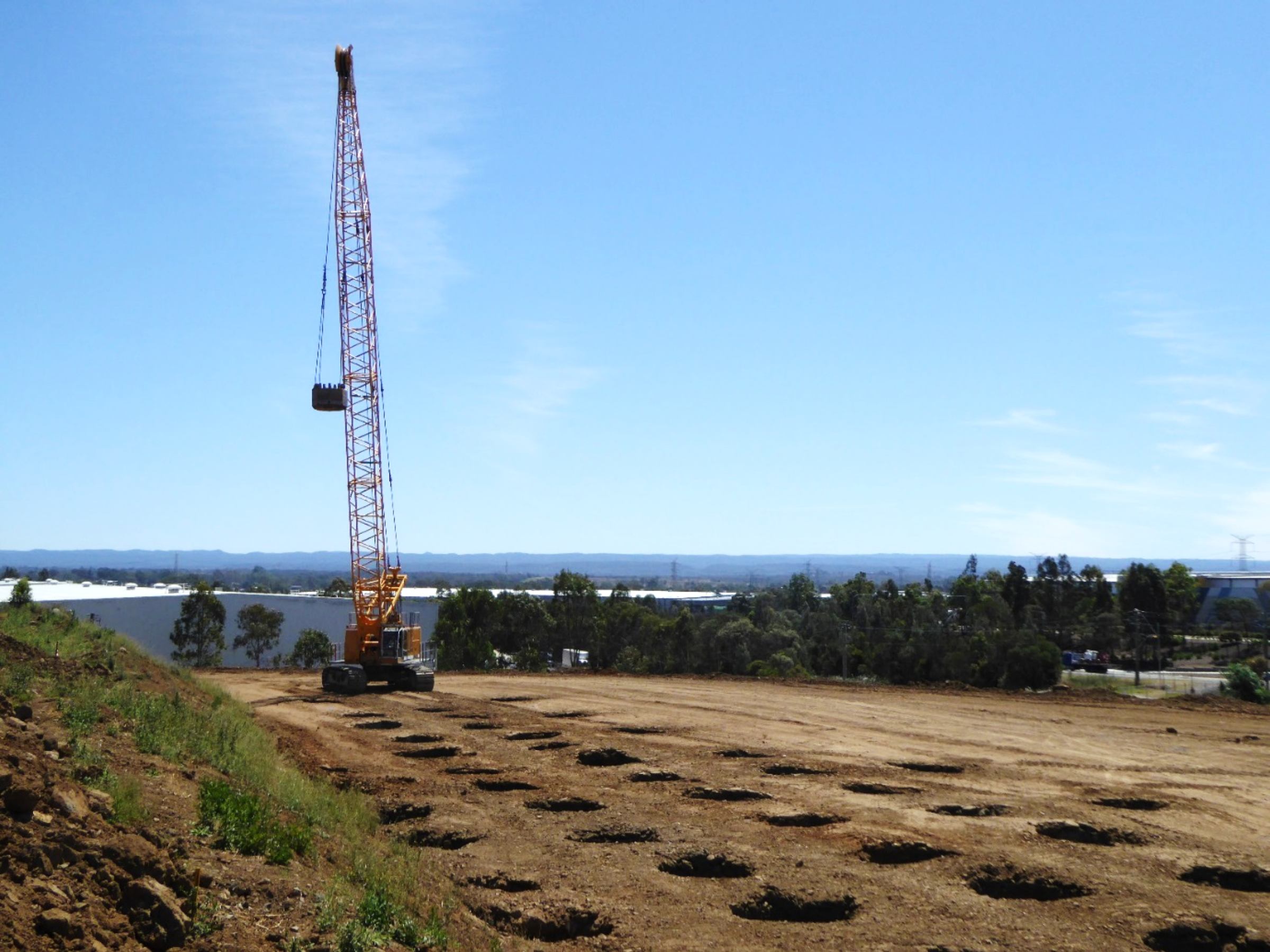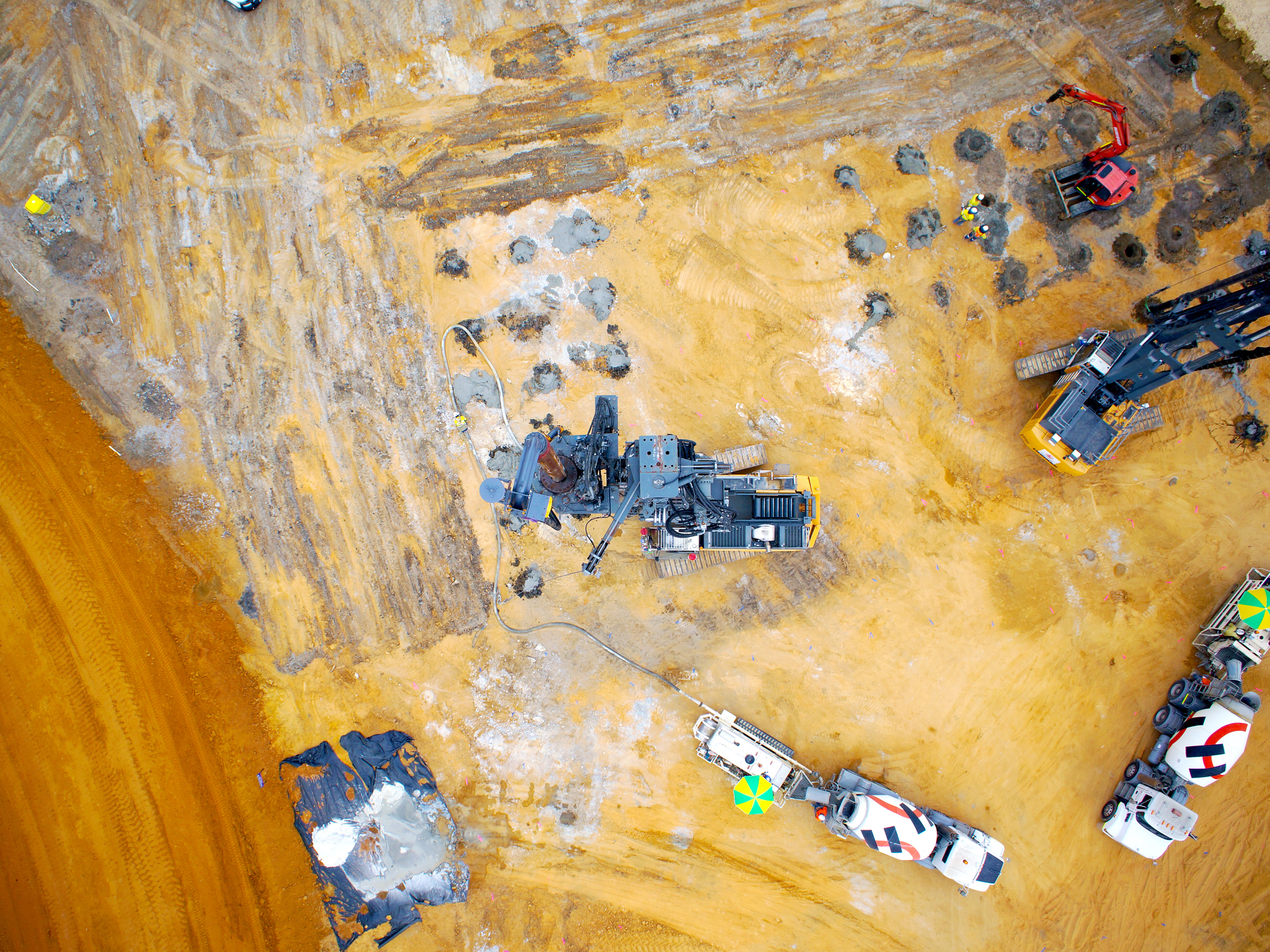Presentation and key elements
What is it?
Dynamic compaction is a technique that uses large pounders typically weighing between 12 to 30 tonnes to densify the soil. The pounder is dropped in free fall from heights of 10 to 25 meters.
The impact transmits high energy waves through the compressible soil layer to reduce the soil matrix void ratio and improve its geotechnical properties.
When and why use it?
Dynamic compaction is applicable to any type of granular soil.
This technique is particularly well-adapted to nonorganic heterogeneous fill, made ground and reclamation areas with varying characteristics, even when large boulders are present. Dynamic compaction is effective in both unsaturated and saturated soils.
Since the late 60s, Menard has applied this technique to thousands of sites for very different types of structures and conditions (port and airport platforms, heavy storage, buildings, landflls, etc.) to compact the ground and reduce settlement, mitigate liquefaction, stabilise or treat hydraulic fill, limit lateral earth pressure behind quay walls, and increase bearing capacity.
📝 Did you know?
The technique was invented and developed by Mr. Louis Ménard!
